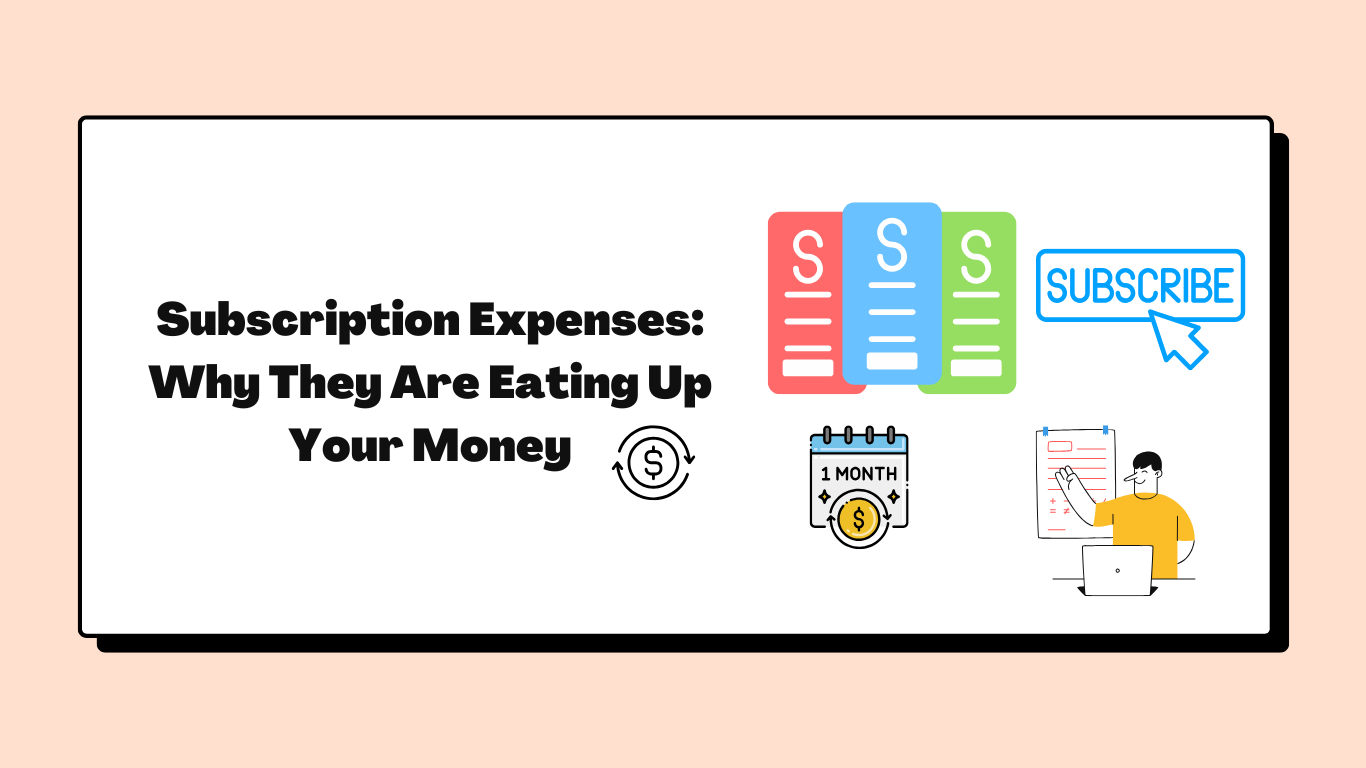As I sat watching the sunset, my phone buzzed with an email notification—my monthly bank statement from HDFC. Curious (and slightly anxious), I opened the PDF. My heart sank. My balance was way lower than expected.
Normally, I keep a couple of thousand rupees in my account to cover expenses for 20-25 days. But this time, I barely had enough for the next 2-3 days! I quickly scanned my transaction history and found the culprit: subscriptions.
From OTT platforms to cloud storage, music streaming, and so-called “premium” memberships, my money was vanishing in small but frequent deductions. And I’m sure I’m not alone in this.
Understanding Your Spending Habits
Let’s break down a typical budget structure. Most of us allocate our income into three major categories:
1️⃣ Mandatory Expenses – Rent, EMIs, electricity, internet, etc.
2️⃣ Savings – SIPs, chit funds, emergency fund, insurance.
3️⃣ Miscellaneous Expenses – Entertainment, dining out, shopping, and yes… subscriptions.
Here’s how my spending looks:
Mandatory Expenses – 60%
Savings – 30%
Miscellaneous Expenses – 25%
Before you judge my spending habits, here’s the breakdown of my mandatory expenses:
40% – EMIs (house, personal, car loans)
11% – Fuel
9% – Electricity, mobile, and Wi-Fi bills
Now, my savings are pretty straightforward:
✅ Chit funds
✅ Mutual fund SIPs
✅ LIC & ULIPs
So, what’s eating up my extra cash?
Subscription Overload: The Hidden Expense
Subscriptions have become silent killers of our bank balances. What started as a convenient way to access entertainment and premium services has turned into a financial black hole.
Think about it:
Netflix – ₹199/month
YouTube Premium – ₹149/month
Spotify – ₹179/month
Amazon Prime – ₹299/month
Google One Storage – ₹130/month
Individually, these don’t seem like much. But add them up, and you’re spending over ₹950 a month—or more than ₹11,000 a year—on services you may not even fully use.
Studies show that most people underestimate their subscription expenses by at least 50%! That means if you think you’re spending ₹1,000 per month, you’re probably burning closer to ₹2,000 without realizing it.
If you haven’r read my previous post: Mastering Spending Habits: A Personal Journey of Saving Smarter
The Psychology Behind Subscription Expenses
Why do we keep falling into this trap? It comes down to two simple tricks:
Auto-Renewal: Companies make it effortless to sign up but frustrating to cancel. You forget about the recurring charges, and they keep deducting money month after month.
Psychological Pricing: ₹149, ₹199, ₹299—these amounts seem small. They feel like a one-time expense, like buying a coffee or a burger. But over a year, they add up to thousands.
And the worst part? Once you’re used to a service, companies slowly increase the price, knowing that most users won’t bother canceling.
How to Take Control of Your Subscription Expenses
Now that we know the problem, let’s fix it. Here’s how you can stop unnecessary subscriptions from draining your money:
✅ Audit Your Subscriptions – Open your last three months’ bank statements and list every recurring payment. Cancel anything you haven’t used in the last 30 days. Use apps like Cred to track and manage subscriptions easily.
✅ Use Free Alternatives – Do you really need Apple Music and Spotify? YouTube has a free version. Google Drive offers 15GB free storage. Check if you’re paying for services that have free or cheaper alternatives.
✅ Turn Off Auto-Renewals – Manually renew your subscriptions instead. This way, every time a renewal is due, you’ll actively decide if it’s worth keeping.
✅ Bundle & Save – Many ISPs and mobile providers offer free Netflix, Prime Video, or Disney+ Hotstar with their plans. Instead of paying separately, check for bundled offers.
✅ Rotate Subscriptions – Do you need five OTT platforms at once? Subscribe to one, binge-watch, cancel, and switch to another. This way, you only pay when you actually use a service.
✅ Use Virtual Cards for Free Trials – Many banks offer virtual credit cards that expire after one use. Use these for free trials so you’re never charged when the trial ends.
✅ Set a Subscription Budget – Allocate a fixed amount (e.g., ₹500/month) for subscriptions. If you want to add a new one, cancel another to stay within budget.
Subscription Expenses: A Wake-Up Call
Companies thrive on our forgetfulness and convenience. But it’s up to us to break the cycle and take control of our spending.
So, here’s what I want you to do right now:
1️⃣ Open your bank app and check your last three months’ statements.
2️⃣ Make a list of all your subscriptions.
3️⃣ Cancel at least one service you don’t need.
Your future self (and bank balance) will thank you!
What are your thoughts? Have you ever been shocked by your subscription expenses? Drop a comment below and let’s discuss!

[…] Read other posts: Subscription Expenses Are Silently Draining Your Bank Account […]